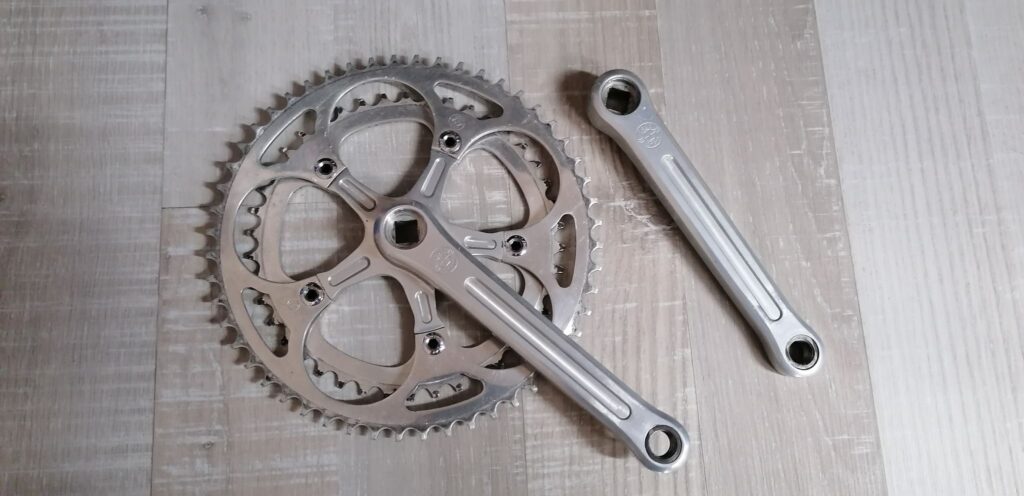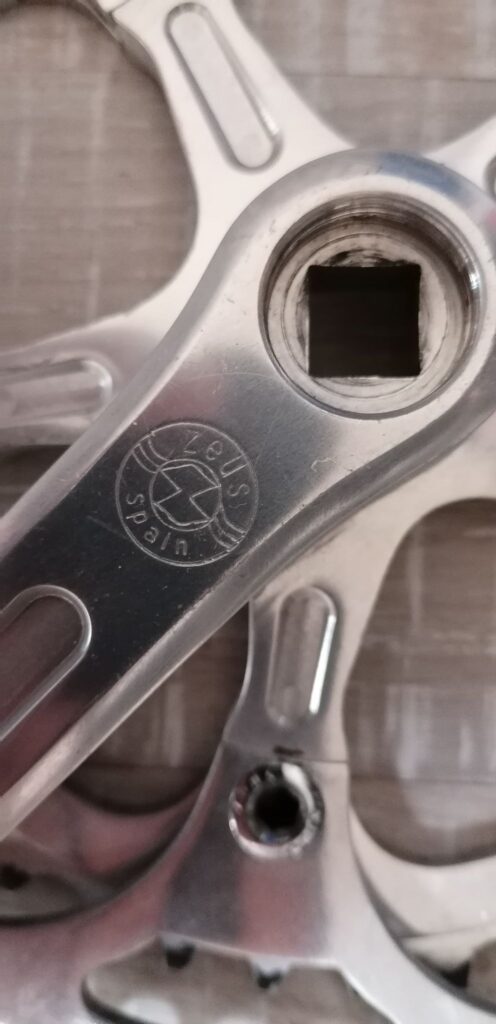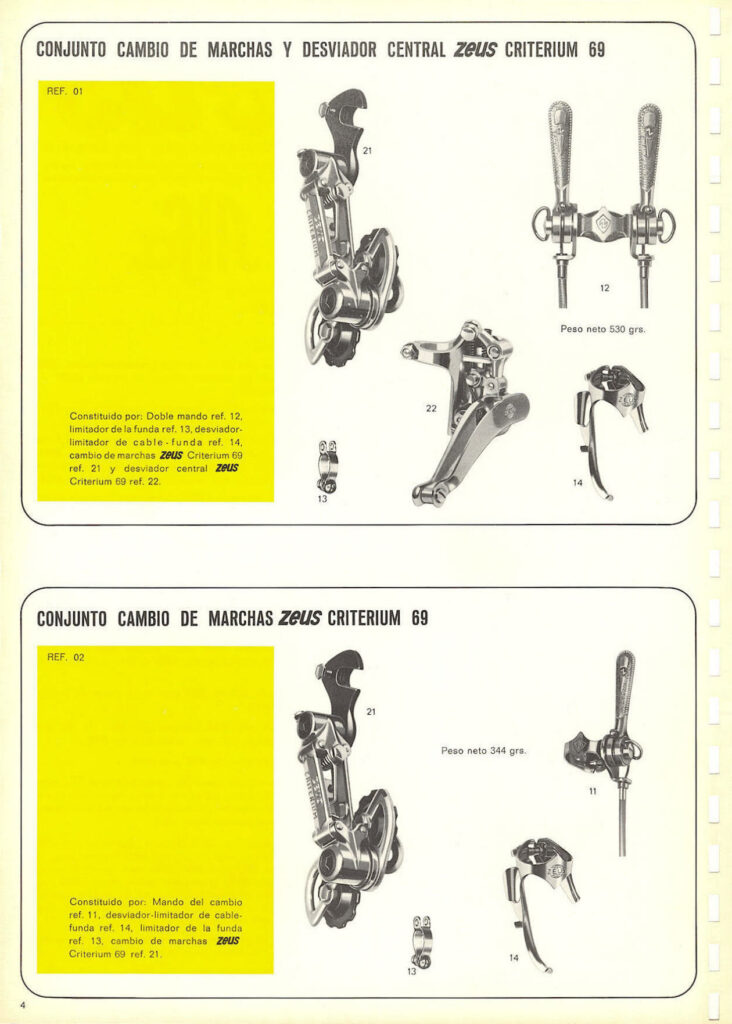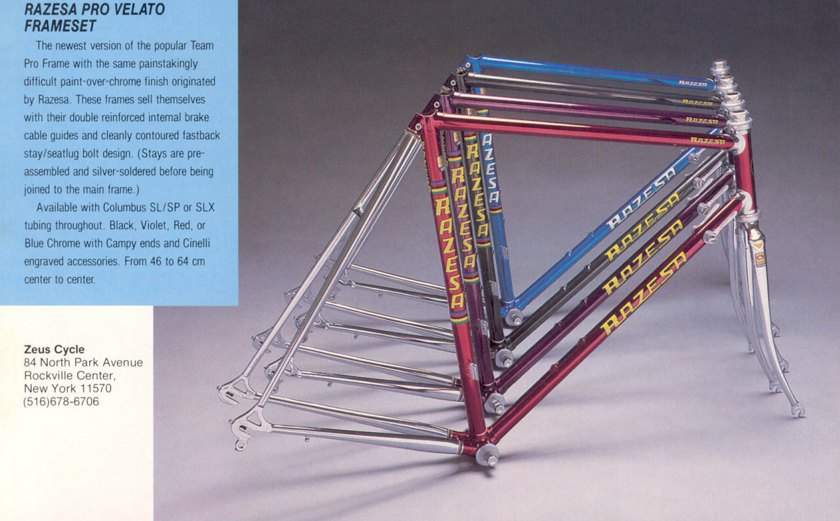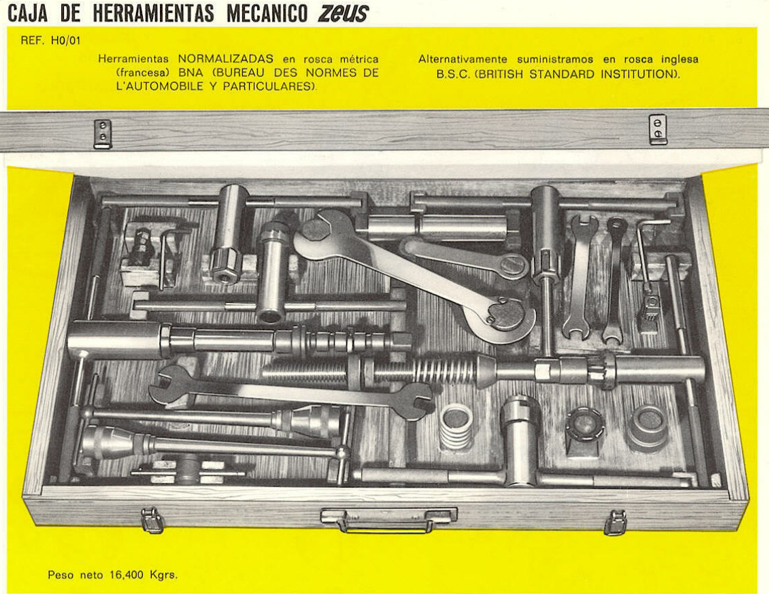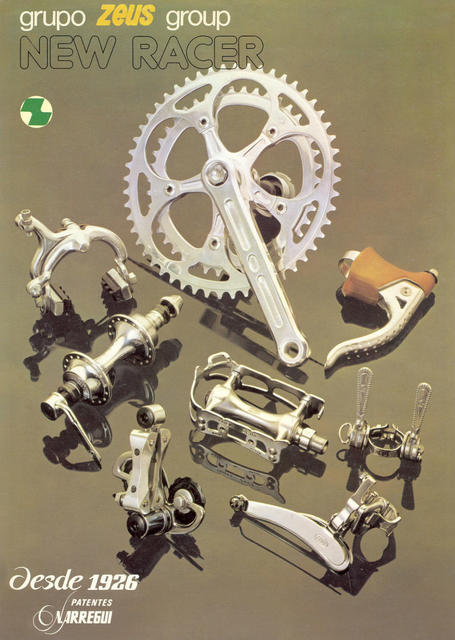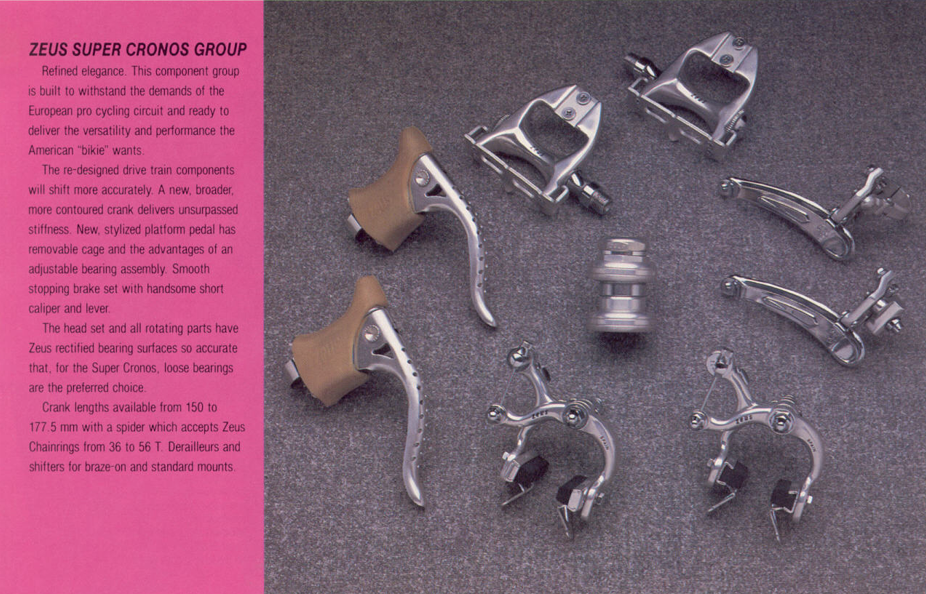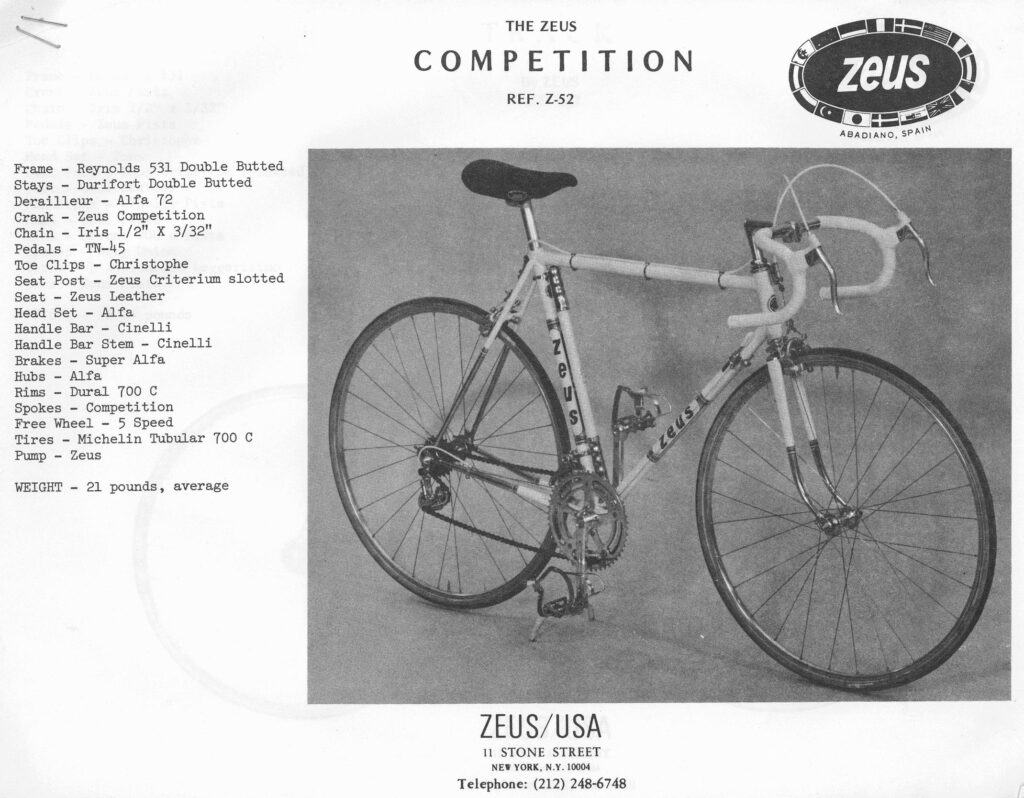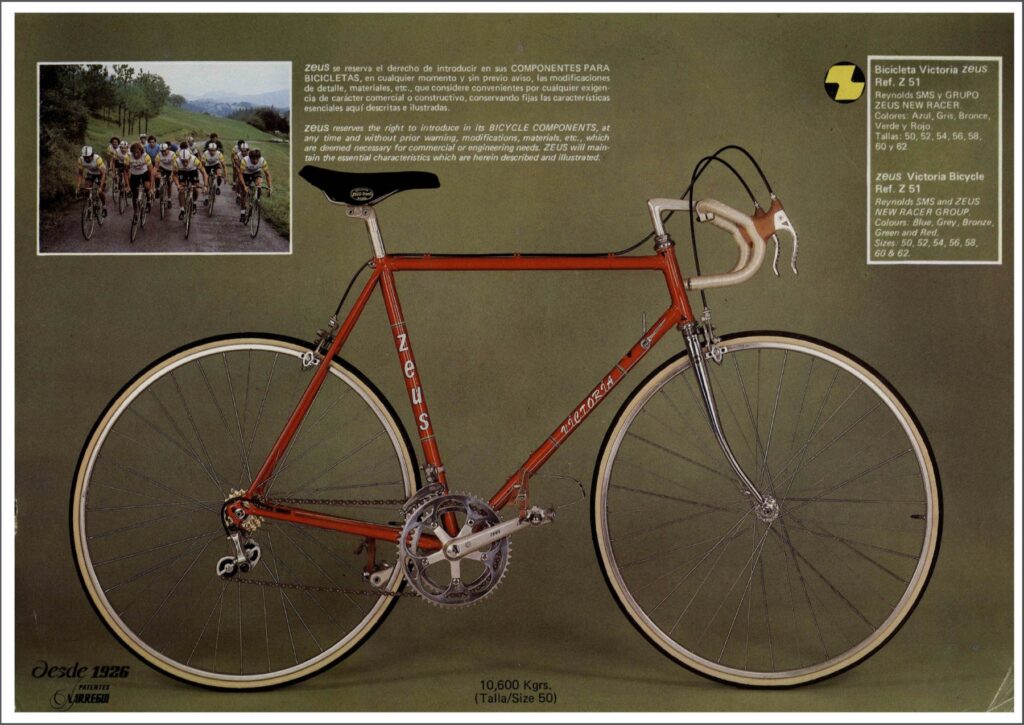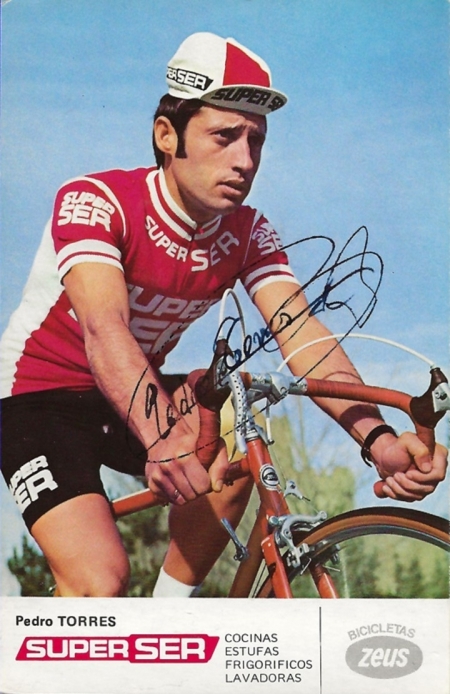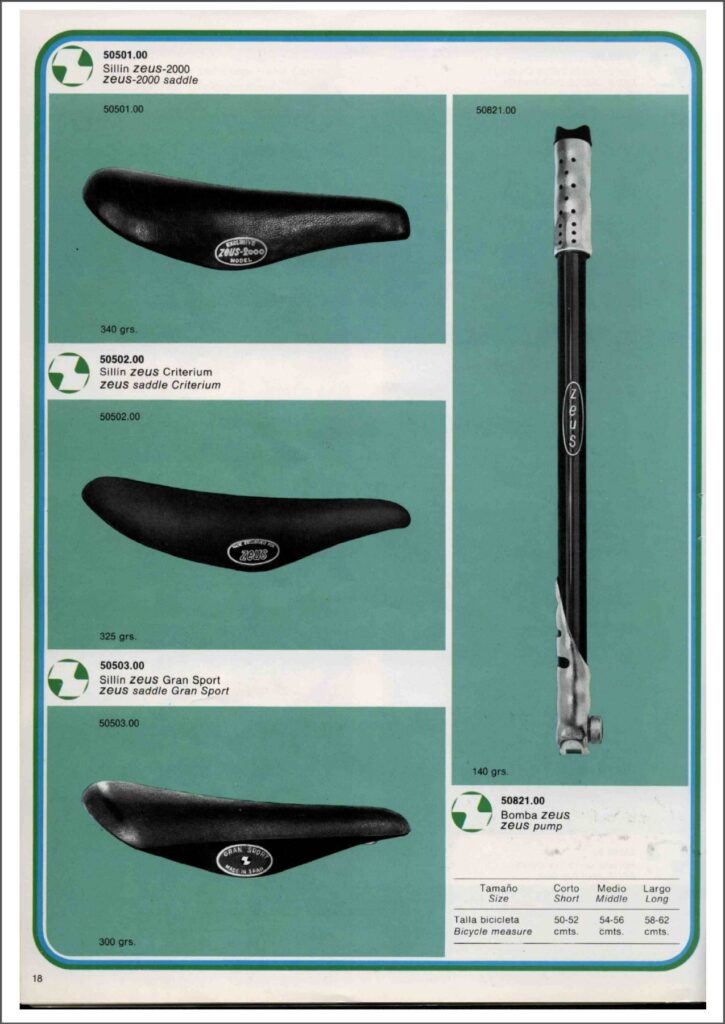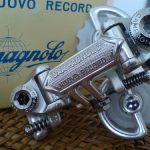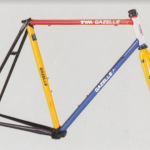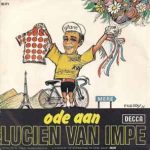Anyone who has ever owned a derailleur from the Spanish brand Zeus has undoubtedly noticed the resemblance to the Italian Campagnolo. There are still brands that copied Campagnolo, such as the Italian Gian Robert, the Spanish Triplex, but in terms of quality they didn't even come close to the Spanish Zeus.
This brand, which has unfortunately been gone for a while, was an excellent alternative to Campagnolo and was certainly not inferior to the Italian giant for certain groups. Just think of the Zeus 2000 group, which scores very high both aesthetically and qualitatively.
A group that is very popular among collectors of vintage racing bikes and which professional racing bikes were also equipped with.
The beginning of Zeus
In 1926 Nicolás Arregui founded Gallastegui Zeus Industrial in the Baskische Eibar. From the very beginning, the company has focused on the production of weapons, parts for agriculture, shipping and sewing machines.
From 1932, bicycle components and even complete bicycles were added. Unfortunately, this quickly came to an end due to the Spanish Civil War (1936 – 1939) and then WWII (1940 – 1945). Weapons are mainly produced between 1936 and 1945.
The production of components for the bicycle industry had already started before the Spanish Civil War and Zeus tried to bring a lot of innovations to the market during this period, but the wars and economic crisis prevented Zeus from really breaking through on the international market.
After WWII they were mainly concerned with copying the French Simplex and Huret and especially the Italian Campagnolo. In 1970 their first catalog was published containing parts, tools, clothing and even frames. The frames were not made by Zeus himself but by Ciclos Letona – Razesa.
Zeus 2000
At the beginning of the 1970s, the semi-groups Zeus Alfa and Criterium were available on the market. They were decent groups but not of the highest level and above all they had nothing innovative. In 1972 Zeus presented his group Zeus 2000 at the Motor Show in Brussels, which was innovative and also had its own design.
Dit bericht op Instagram bekijken
The group's derailleur was then the lightest available on the market. Some parts were made of titanium and the quality was in no way inferior to the Campagnolo Super Record group. In addition, the group was compatible with the latter.
In 1980 the group Zeus New Racer came on the market to replace Zeus Alfa. Five years later, the Zeus 2000 group was also replaced by the Zeus Supercronos group. However, both groups could not match the success of Zeus 2000, which meant that the International success was not forthcoming.
It was also the beginning of the end for Zeus, which was bought by Orbea in the late 1980s.
Main groups of Zeus
Below you will find an overview of the most important components, groups and bicycles that Zeus ever brought to the market.
- Zeus Criterium
- Zeus Alfa
- Zeus Alfa Junior
- Zeus Super Alfa
- Zeus Gransport
- Zeus Cosmos
- Zeus Pista
- Zeus 2000
- Zeus 2001
- Zeus New Racer
- Zeus Supercronos
- Zeus Competition
- Zeus Victoria
Sponsorship by Zeus
Zeus started sponsoring cycling teams in 1966 with the cycling team Zeus Karpy and stopped in the late 1980s when the company was acquired by Orbea. Orbea, however, continued with the teams Euskaltel – Euskadi in the 90s and 2000s. Initially, the decals of Zeus appeared on the bicycles, but these were gradually replaced by Orbea.
You can find all cycling teams that Zeus ever sponsored on the following link> Zeus cycling teams
The most famous riders to ever ride a racing bike equipped with Zeus components were Harm Ottenbros who won the World Championship in 1969 on a Gazelle equipped with Zeus components, Erik De Vlaeminck, Luis Ocana, Rik Van Looy and Pedro Delgado.
Useful links
More photos of Zeus bicycles and parts can be found on the instagram accounts #zeusbicycles and #zeus2000
Dit bericht op Instagram bekijken

